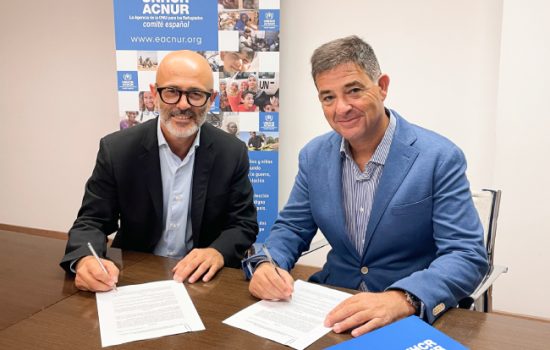
There were 130,088 sales recorded in Spain in the second quarter of 2019.
The number of properties sold has remained steady, with 130,088 sales registered in the second quarter, representing a quarterly decrease of -2.82%.
Foreign demand for properties in Spain has retained its strength, with 16,200 sales recorded.
British nationals maintained their leadership in the breakdown of home purchases by foreigners in Spain, with a 13.31% of the total, a percentage that represents their smallest participation historically, 2.157 property sales.
Quarterly property sales in Spain
(Q1 2004 –Q2 2019)
(Registradores de España Data)
The price of housing in Spain continued to grow significantly throughout the second quarter of the year to 1,637.4€ per m2, registering a quarterly growth of 2.55% in the IPVVR (Spanish acronym that refers to the Index of the Price of Repeated House Sales), showing an interannual increase of 8.26%
Price of property in Spain
(Q1 2004 – Q2 2019)
(Ministerio de Fomento data)
16,209 property purchases correspond to foreigners.
Evolution of no. of Spanish property purchases made by foreign buyers
(Q1 2013 – Q2 2019)
(Ministerio de Fomento data)
Foreign demand for properties in Spain has translated into a 12.46% home purchases by foreigners in the last quarter, property purchase, an increment in relation to the previous quarter (12.20%).
In absolute terms, the 16,000 quarterly purchases have been exceeded again, giving rise to quantities very similar to those recorded in the first quarter, (Q1 2019-16.331 / Q2 2019-16.209) and close to the highs of recent years.
British nationals continue to lead the ranking of home purchases by foreigners in Spain, with a 13.31% of the total – a percentage that represents their smallest amount historically (Q1 2019 2,252 /Q2 2019 2,157).
Brexit continues to weigh down and translate as uncertainty for British home buyers in Spain, which has led to “a decline in demand” of this buyer profile.
The second place in the foreign buyer ranking goes to France (7.62% – 1.235 sales), followed by Germany (7.30% – 1.183 purchases), Morocco (6.48% -1.050 purchases) and Romania (6.09% – 987 purchases).
Purchases by main nationalities 2Q 2019
(Registradores de España data)
Display more info on mouse over the graph
In the last twelve months, 12.35% of home purchases have been made by foreigners, in other words – a total of about 64,000 homes were bought in Spain by foreign nationals during this period.
The results of the last twelve months maintain a structure similar to that of the last quarter, confirming the confidence the leading nationalities have in the Spanish residential market but highlighting the previously mentioned progressive decrease in the weight of British demand.
Prices in Costa Blanca
Prices in Costa Blanca continue their upward trend, having reached in the second quarter of 2019 an average price per square meter of € 1558.6, as opposed to the € 1509.5 / m2 for the previous quarter.
The highest price increases were recorded in the cities of Jávea (Q1 2019 -1800.2 €/m2 /Q2 2019 – 1922.7 €/m2)
and Denia (Q1 2019 -1602.5 €/m2 /Q2 2019 – 1703€/m2).
Benidorm (Q1 2019 -1950,8 €/m2 /Q2 2019 – 1963,6€/m2) has barely seen any changes, but Santa Pola (Q1 2019 -1348,1 €/m2 /Q2 2019 – 1296.8€/m2) has suffered a slight price drop.
Costa Blanca Price – Peak & Trough
(Q1 2005 – Q2 2019)
(Ministerio de Fomento data)
*Costa Blanca South data formed from municipalities of Algorfa, San Miguel, Guardamar, Orihuela, Torrevieja, Pilar de la Horadada and Rojales.
Costa Blanca North data formed from municipalities of Villajoyosa, Altea, Alfaz del Pi, El Campello, Teulada-Moraira, Jávea, Denia, Calpe and Benidorm.
Costa Blanca Property Price Evolution
(Q4 2006 – Q2 2019)
(Ministerio de Fomento data)
Sales in Costa Blanca
As indicated, the Autonomous Communities that clearly emerge as leaders in foreign property purchases for this quarter are the Balearic and Canary Islands where they exceeded 25% of the total, followed by the Valencian Community, with numbers also nearing the 25% mark.
The fourth position is taken by Murcia, with a clear upward trend during the last years that has seen foreign property purchases reach close to 20% of the total market.
In relative terms by provinces, the highest number of housing sales per thousand inhabitants during the second quarter of the year was recorded in the high tourist density province of Alicante (5.13%) – as is usually the case -, with a significant number of second residences owned by foreigners.
The graphics show the consolidation of high demand for properties from foreign buyers in the most attractive tourist destinations.
These are areas with a high rate of tourist activity, a factor which has a significant impact on the decision foreigners make when purchasing a property.
In these regions, residential markets are considered to be more stable to the extent that they are not so exposed to the ups and downs of the economy and buyers feel that other unfavourable factors must be present for their investments to be negatively affected.
Costa Blanca Purchase – Peak & Trough
(Q1 2004 – Q2 2019)
(Ministerio de Fomento data)
*Costa Blanca South data formed from municipalities of Algorfa, San Miguel, Guardamar, Orihuela, Torrevieja, Pilar de la Horadada and Rojales.
Costa Blanca North data formed from municipalities of Villajoyosa, Altea, Alfaz del Pi, El Campello, Teulada-Moraira, Jávea, Denia, Calpe and Benidorm.
Comparison: Costa Blanca sales / Sales to foreign residents in Alicante province
Q1 2006-Q2 2019
(Ministerio de Fomento data)
Costa Blanca Sales
Q1 2004 – Q2 2019
(Ministerio de Fomento data)
*Costa Blanca South data formed from municipalities of Algorfa, San Miguel, Guardamar, Orihuela, Torrevieja, Pilar de la Horadada and Rojales.
Costa Blanca North data formed from municipalities of Villajoyosa, Altea, Alfaz del Pi, El Campello, Teulada-Moraira, Jávea, Denia, Calpe and Benidorm.
New Build vs Resale in Costa Blanca
Second-hand housing remains the main protagonist of the residential market, recording up to 75% of all sales in all autonomous communities during the last quarter.
In the Valencian community second-hand properties have taken an 86.64% market share, the largest in all provinces.
Sales of new houses, on the other hand, have slowed down its upward trend in relative sales compared to the last quarters, possibly caused by the regulatory adjustments in mortgage legislation that have led to a few changes in the way banks and notary work.
Number of sales to foreign residents in Alicante province by property type
Q1 2006-Q2 2019
(Ministerio de Fomento data)
Average value of properties purchased by foreigners in Alicante province
Q1 2006-Q2 2019
(Average property transaction value (€), Ministerio de Fomento data)
Investment by foreign residents in property in Alicante province
Q1 2006 – Q2 2019
The most outstanding aspect of this second quarter of 2019 is the declining purchasing power of British nationals – the group leading the purchase of properties in Spain up until now. While it remains in first place it recorded its historical minimum in the last quarter. Other nationalities have remained significantly stable during the last years.
For more data to be well informed, you can download our COSTA BLANCA PROPERTY MARKET REPORT 2018.
We want to help you navigate all the legal complexities that come with your home buying in Spain, but this article is legal information and should not be seen as legal advice.
- View more post about: Purchase Conveyancing, Sales Conveyancing





